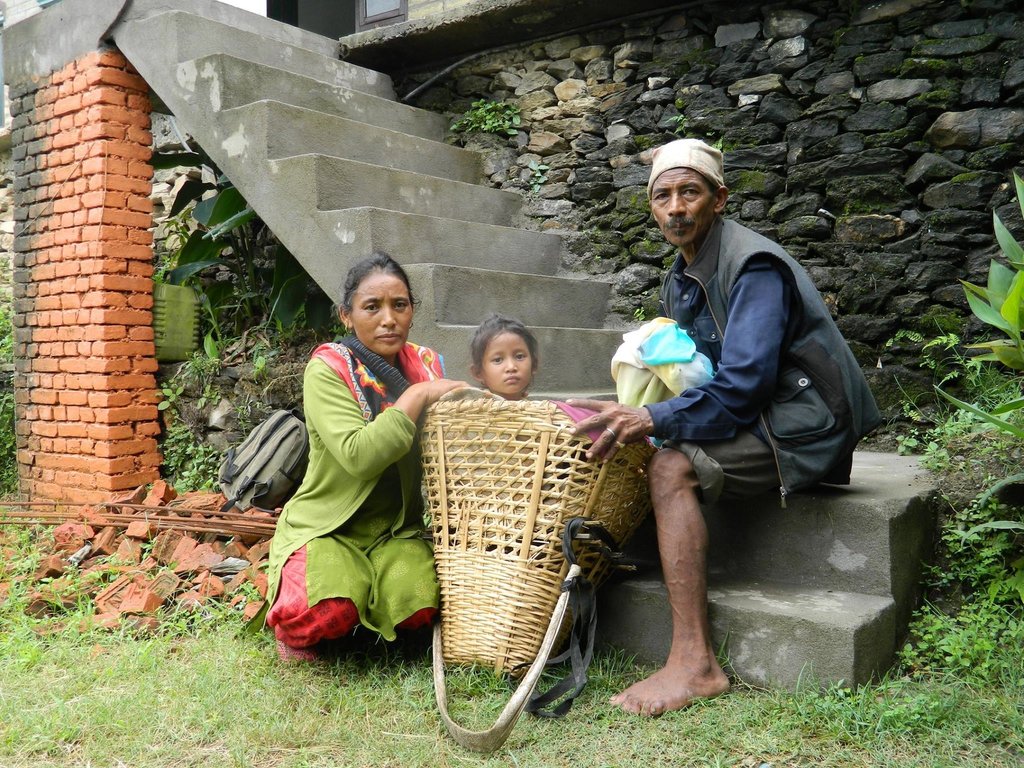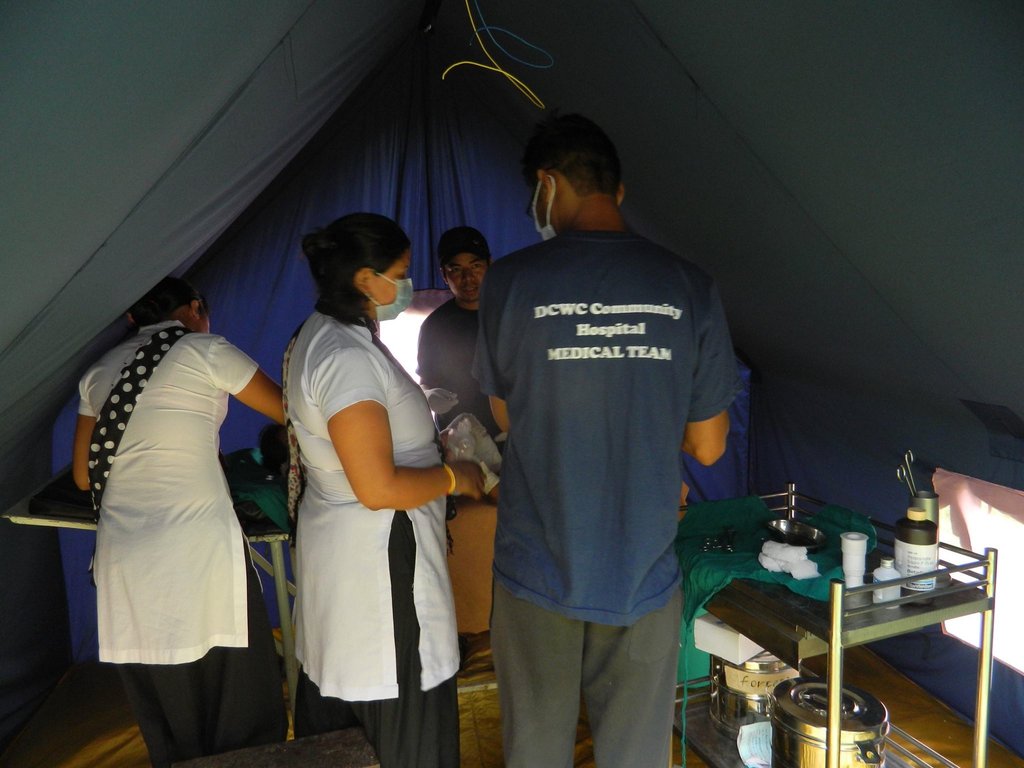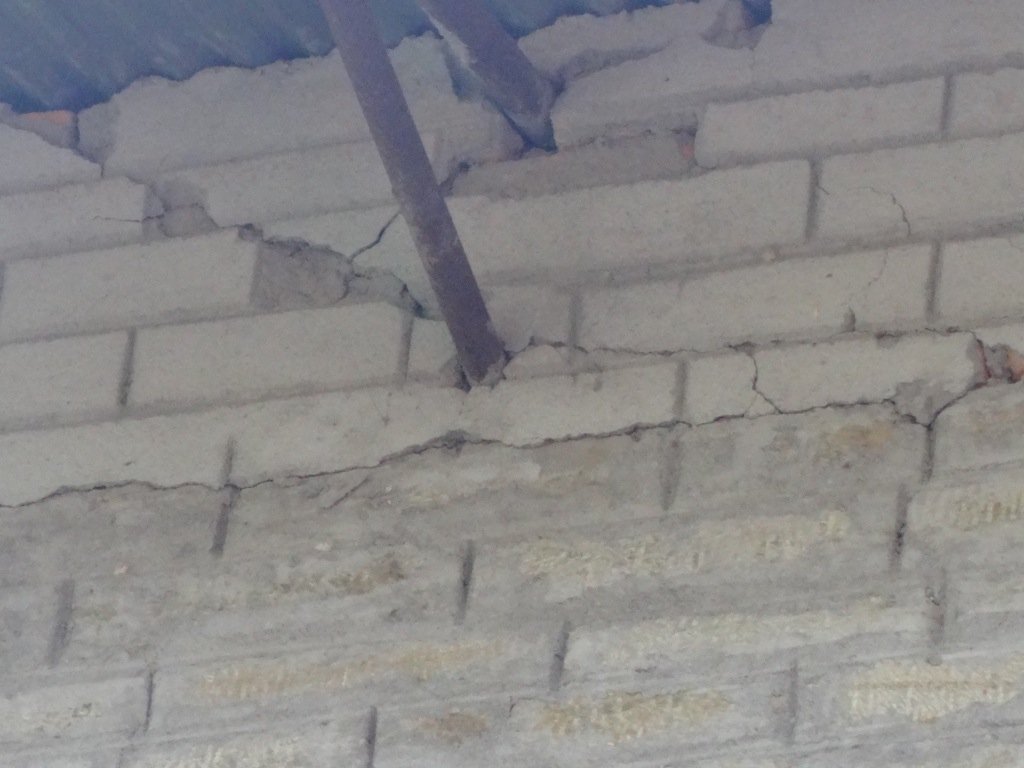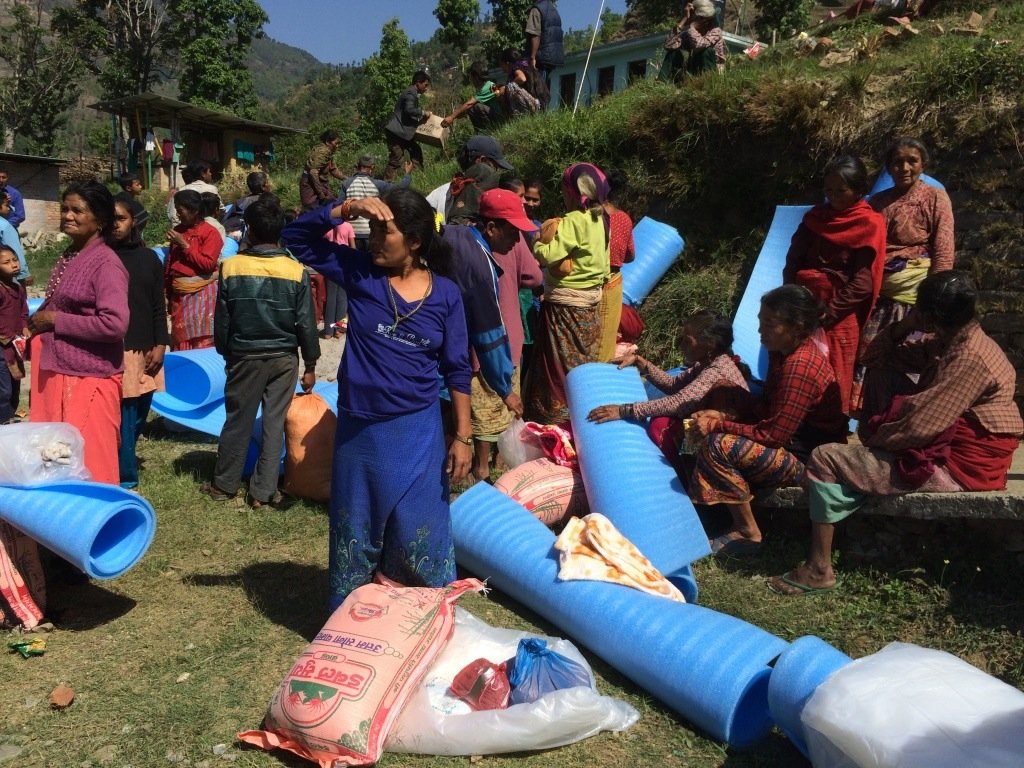By Karin Reibel | Volunteer Project Leader
Just as we submitted our last report about Rajbash, several strong earthquakes and numerous aftershocks shook the small country of Nepal. Huge areas of the country were devastated and over 2 million Nepalis left homeless, mostly in rural areas.
While aid started pouring into Nepal immediately from all over the world, the Nepali government was overwhelmed with the tasks before them. Nepalis started to help themselves. The staff of DCWC and the Rajbash hospital immediately started buying rice and other basic necessities of daily life in Kathmandu and distributed them to the people, many of whom lost everything in the earthquakes. They rented vehicles and hauled supplies to drop-off points from which they were carried on the backs of DCWC staff and volunteers into remote villages. In collaboration with government agents and with many volunteers they set out to canvass many of the villages in the surrounding area to assess damages and needs. Like in many villages in the hard hit Sindhupalchok area, 70% of the houses in the little town of Rajbash were destroyed; livestock was lost, rice and animal feed stored in homes was spoiled. Power poles had been covered by landslides, and the monsoon rains were not going to help the general chaos. While the staff- and outbuildings in the hospital compound were undamaged, our hospital sustained damage to the walls on the second floor and lost a good deal of diagnostic equipment. Afraid to stay inside the building, the staff erected a tented area in a field next to the hospital where they treated patients safe from falling stones. For 12 days the hospital held a free medical camp for people affected by the earthquake. 520 patients were treated during that time while right next to them the relief effort was going on.
The hospital yard had become a command center for relief activities in the region. Plastic tarps for temporary shelters were measured out, blankets, matting, food and basic kitchen utensils assembled to assist people in creating make shift lives until government help would arrive to let them replace what they had lost.
It has been three months now since the earth began to move. The government has taken control of aid distribution, an enormous task. Most people still feel they have to rely on themselves to reclaim what they lost. In this NGOs on the ground in Nepal play a vital part.
As of this writing the damage to the second floor of the hospital is being repaired. As the monsoon rains are soaking the area, our staff is ready to move operations back inside the building. The American organization Medshare donated an entire container of medical equipment and medicines which were distributed to a number of different hospitals. With this help we have been able to replace some of the equipment and medicines that were lost during the earthquakes.
Also during the month of June we were able to finally install our long awaited solar power panels. Sitting high atop the staff building they are providing electricity to the entire hospital compound and make us independent of the now buried electric grid.
As can be expected, the last months saw a surge in patient numbers. The earthquake and its aftermath truly took its toll with people injured through falling debris, with contaminated or broken watersupplies, and the ubiquitous dust laying over the rubble. Orthopedic cases increased by 150%, infectious diseases were up 155% and skin conditions rose by 300%!
One little girl, 4 year old Lukky, came to our make shift hospital tent with extensive burns on her hands and her lower body. She and her sister were helping to fill Kerosene into lanterns when suddenly there were flames and anguished screams. Lukky’s parents rushed to their daughters to find their youngest one crying in pain. Bandaging the little girl and comforting her the family rushed to make a seat for her in the big basked used for harvesting. Rocked gently in this make shift ambulance her parents carried her for three and a half hours down to the Rajbash hospital where Dr. Uddav and our nursing staff were able to disinfect and properly treat Lukky’s burns. Relieved and grateful to know their daughter safe they were on the long journey home the same afternoon.
This just in: We just got word that we finally received the long awaited government certification as the official birthing center in the Kavre district. This is good news for all pregnant women in the area, as it is a further step toward better infant and maternal health and the reduction of infant mortality. Under the agreement the government will provide cash incentives to pregnant women for coming in for regular pre- and post natal care (4 visits at 100 rupees ea. = 400 = $4) plus a 1000 rupee ($10) gift at the baby’s birth. In turn we are required to track each woman and provide monthly reports on her and the child’s condition. While we had hoped the incentives to be more substantial, we are thrilled that our efforts are being given the importance they deserve.
As a result of efforts over the past months, the hospital now enjoys a wider acceptance by the government and by the locals. Its responsibilities have increased as has the recognition of the importance of its place in the community.
To read more about the work of the DCWC go to ‘globalgiving.org’. In the box ‘I am interested in ...’ write DCWC and click return.
Links:
Project reports on GlobalGiving are posted directly to globalgiving.org by Project Leaders as they are completed, generally every 3-4 months. To protect the integrity of these documents, GlobalGiving does not alter them; therefore you may find some language or formatting issues.
If you donate to this project or have donated to this project, you can receive an email when this project posts a report. You can also subscribe for reports without donating.
Support this important cause by creating a personalized fundraising page.
Start a Fundraiser


